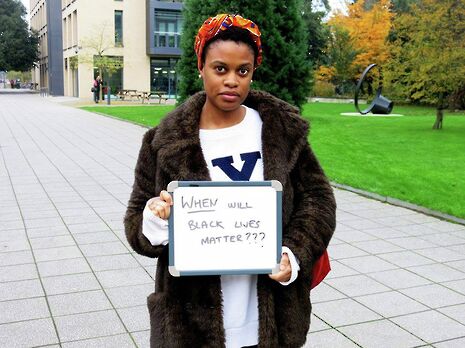When will black lives matter?
The anger and hurt in Ferguson will not go away unless America deals with its deep-seated structural racism

At 9pm on the August 24 2014, the Missouri grand jury announced that it will not indict Darren Wilson, the police officer involved in the fatal shooting of Michael Brown. Why is this event so important? Because the shooting of an unarmed black teenager by a white officer in Ferguson brought the race to forefront of public discussion, and because this incident has highlighted the underlying racial tensions in the United States as riots and protests broke out all across the country. The Michael Brown case is not just about this particular incident: it is seen as emblematic of the prevalence of racial prejudice in the United States.
“Prejudice is still alive, but Michael Brown isn’t”. This quote, taken from the Cambridge BME Campaign ‘Black Lives Matter’, captures the widespread anger felt by many African-Americans and people across the globe. The injustice of the killing of an unarmed black teenager haunts a lot of people, and rightly so. The Michael Brown case is not an isolated incident; there are numerous other cases we could cite. Like Travyon Martin, an unarmed black teenager shot and killed by a white off-duty neighbourhood watch captain in February 2012.
The judiciary decision that these killings were lawful is unsettling to most people mainly because of the way it seeks to justify the killing of these individuals. The common theme to both cases is that unarmed individuals were perceived to be a threat. What this highlights is the damaging ongoing perception of young black males as threatening, a view perpetuated by the media. The frustration caused by this phenomenon is why a frenzy broke out on Twitter over the choice of image used by the media to depict Brown following the shooting, hence prompting the wave of tweets using “#Iftheygunnedmedown, which picture would they use?” Not only this, it seemed strange that the police department released footage of the earlier convenience store robbery involving Mike Brown, as it seems they were already trying to justify the killing by providing the public with a tainted image of the teenager – an experience all too common for the black community.
Both teens were also accused of reaching for the officer’s gun, hence why they were shot. This is a worryingly easy line to use in order to justify the killing of a civilian, in this case two unarmed black teenagers. The law, as it stands, protects the police officers from accountability as they are able to create ‘probable cause’ in which they ‘fear for their life’. This loophole leaves space for police brutality; hence the outcry from the general public. Though police brutality may not be an everyday occurrence, what this case illustrates is that it is possible for police officers to get away with murder. Given the low socio-economic conditions in which many African-Americans live, they will be disproportionately affected by forms of police brutality. A lot of people, especially those of black descent, saw this case as their best opportunity so far to demonstrate to the world that police brutality exists and that, unfortunately, it severely affects black individuals.
By failing to indict Darren Wilson, the grand jury destroyed the sense of hope a lot of people had about finally getting this issue acknowledged by wider society and receiving justice. A moving clip was that of Mike Brown’s mother, where she emphasised: “Do you know hard it was for me to get him to stay in school and graduate? Do you know how many black men graduate? Not many! Because they feel they don’t have much to live for and ‘[the police] gonna to try to take me out anyway’”. Many others feel the same way. The result of this grand jury decision contributes to the view that the system is against them. I do not condone the violent protests seen across the United States. But no discussion of the issue can fail to take into account the deep-rooted anger that caused them.
This case and others like it are not always clear cut, but the existence of grey areas tends to favour the police officer. To limit the scope for police brutality and to provide some comfort to the people of America, there should be a move away from the ‘shoot to kill’ culture currently in place. Officers should be trained to disarm and preserve life in tense situations. Difficult questions should be asked about whether the proportionate response when dealing with an unarmed man was two bullets to the head and four more to the body. What we need is a change in culture, to increase police accountability and to make sure they serve and protect the whole community, as they initially swore to do, not just part of it. Black lives depend on it.
 Comment / Anti-trans societies won’t make women safer14 November 2025
Comment / Anti-trans societies won’t make women safer14 November 2025 News / Controversial women’s society receives over £13,000 in donations14 November 2025
News / Controversial women’s society receives over £13,000 in donations14 November 2025 News / John’s rakes in £110k in movie moolah14 November 2025
News / John’s rakes in £110k in movie moolah14 November 2025 Fashion / You smell really boring 13 November 2025
Fashion / You smell really boring 13 November 2025 Music / Three underated evensongs you need to visit14 November 2025
Music / Three underated evensongs you need to visit14 November 2025









